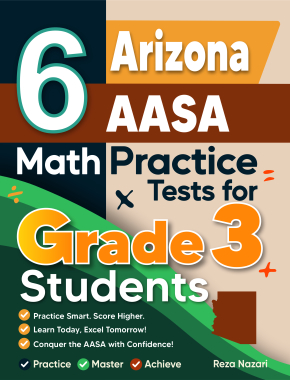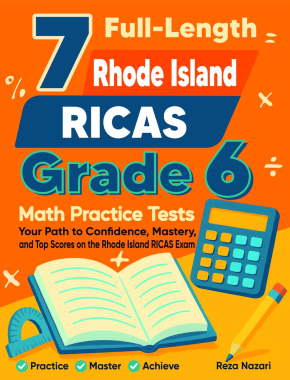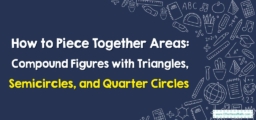Finding Area of Compound Figures

A step-by-step guide to finding the area of compound figures
- Identify the individual shapes: Look at the compound figure and identify the different shapes that make it up. These shapes may include squares, rectangles, triangles, circles, or other shapes.
- Break the figure down: Divide the compound figure into these individual shapes by drawing lines or visualizing how they fit together.
- Find the area of each shape: Use the appropriate formula for each shape to find its area. For example, the area of a rectangle is length x width, while the area of a circle is pi x radius squared.
- Add the areas together: Once you have found the area of each shape, add them all together to get the total area of the compound figure.
- Check your work: Double-check your calculations to make sure you have correctly found the area of each shape and added them together accurately.
Finding Area of Compound Figures – Example 1
Step 2: Find the area of each shape.
\(12×10=120\)
\(5×3=15\)
Step 3: Add them together.
\(120+15=135 yd^2\)
Finding Area of Compound Figures – Example 2
Calculate the area of this shape.
Solution:
Step 1: Divide this shape into regular shapes.
Step 2: Find the area of each shape.
\(7×8=56\)
\(4×4=16, \frac{1}{2}×16=8\)
Step 3: Add them together.
\(56+8=64 in^2\)
Related to This Article
More math articles
- What Are the Applications of Inverse Trigonometric Functions?
- The Ultimate NM-MSSA Algebra 1 Course (+FREE Worksheets)
- How is the SSAT Test Scored?
- How to Solve Word Problems to Identify Independent and Dependent Variables
- Standard Form of a Circle
- SIFT Math Practice Test Questions
- How to Graphing the Floor Function
- The Circle’s Anatomy: A Closer Look at the Parts of a Circle
- 7 Best Headphones for Online Lessons
- Remainder Riddles: How to Decipher Division with One-digit Divisors

















What people say about "Finding Area of Compound Figures - Effortless Math: We Help Students Learn to LOVE Mathematics"?
No one replied yet.